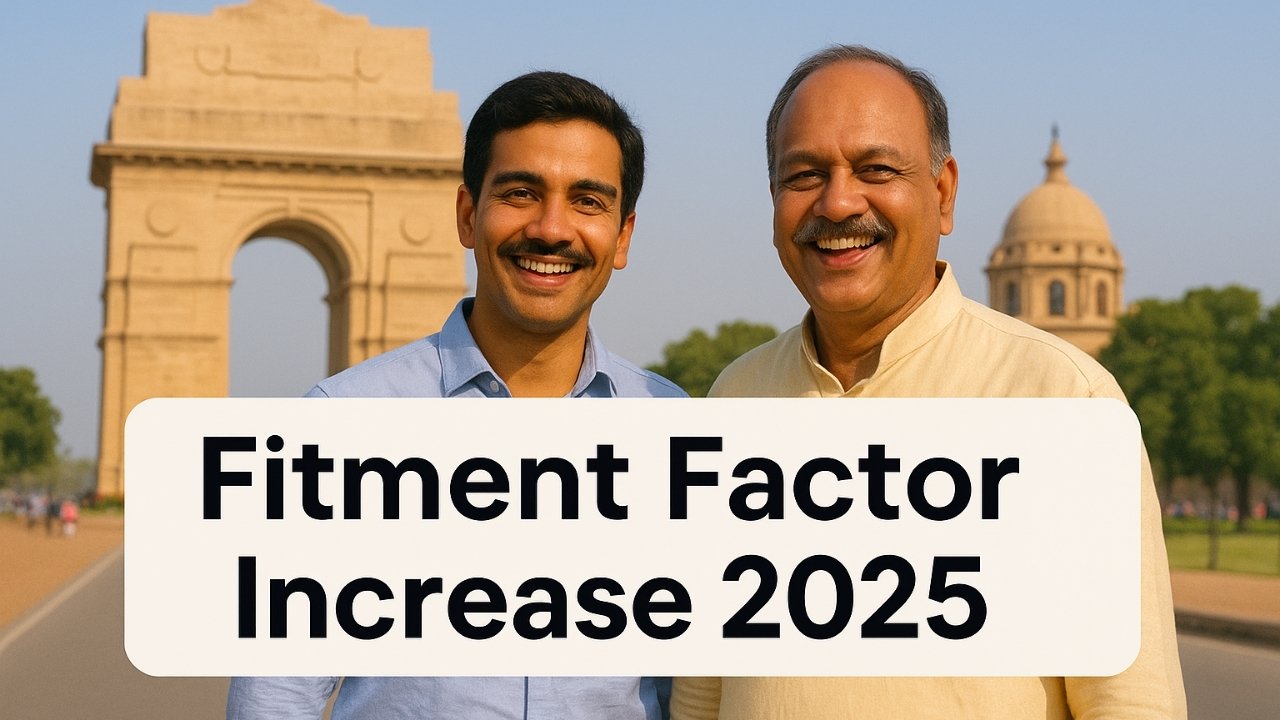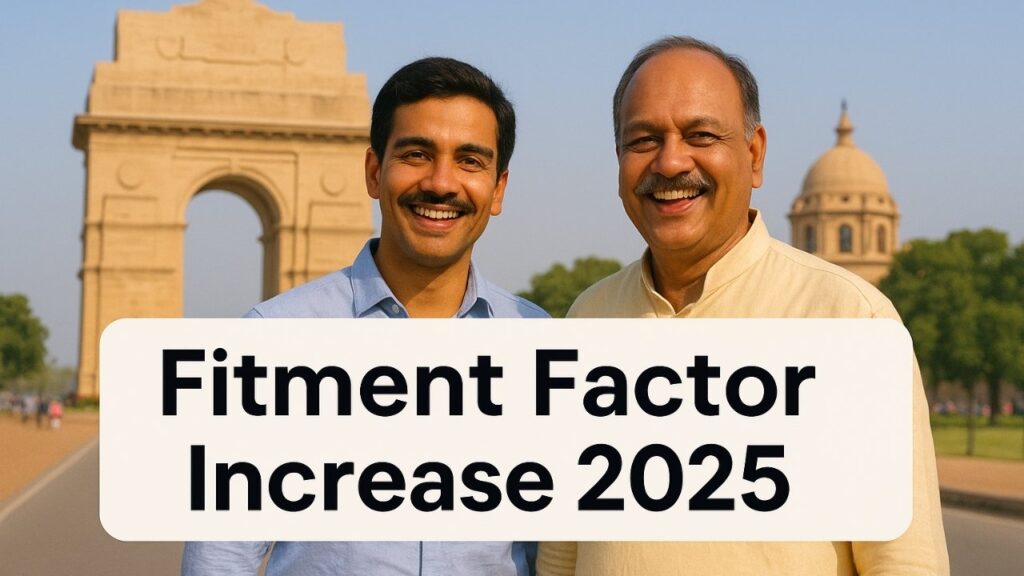The salary framework of Central Government employees in India is likely to witness a substantial revision as discussions around the 8th Pay Commission intensify. Central to these discussions is the proposed fitment factor of 2.86, a key multiplier used to revise the basic pay across all employee categories. This factor serves as the baseline to calculate the revised salary and allowances. Currently, the fitment factor stands at 2.57 as implemented under the 7th Pay Commission. A hike to 2.86 would mean a notable increase not only in basic pay but also in associated benefits and pensions.
Employees and pensioners alike are closely watching developments as this change could potentially improve monthly take-home pay and post-retirement financial stability. The demand for a higher fitment factor has emerged primarily from employee unions who argue that inflation and rising living costs have significantly eroded real wages. This revision is not just about increasing salaries but is also seen as a necessary step toward aligning compensation with the evolving cost of living in India.
The central government has not yet confirmed any official figures. However, meetings and recommendations are expected to culminate in a formal announcement by late 2025, with implementation likely in mid-2026. In this context, understanding the implications of a higher fitment factor becomes essential.
The Financial Formula: Fitment Factor and Its Application

The fitment factor is a uniform multiplier used to revise existing basic salaries in line with recommendations from the Pay Commission. It ensures consistency in upgrading pay scales across departments and roles. The higher the fitment factor, the greater the upward revision in salaries. A proposed increase from 2.57 to 2.86 would lead to an average 40%–50% rise in basic pay, depending on the employee’s current pay level.
This change doesn’t just influence basic pay—it recalibrates a range of allowances and retirement benefits. The reason is simple: most allowances are calculated as a percentage of the basic pay. Thus, even a moderate change in the fitment factor has a ripple effect across the salary structure.
| Pay Commission | Year Implemented | Fitment Factor | Impact on Basic Pay |
|---|---|---|---|
| 6th Pay Commission | 2006 | 1.86 | Approx. 20–25% hike |
| 7th Pay Commission | 2016 | 2.57 | Approx. 14.2% hike |
| 8th Pay Commission (Proposed) | 2026 (Expected) | 2.86 | Estimated 40–50% hike |
The table highlights the evolving scale of pay revision mechanisms and how a seemingly small change in the fitment factor can bring considerable financial benefits for government personnel.
Basic Pay Projections: Entry to Senior-Level Employees
If the proposal to set the fitment factor at 2.86 is accepted, employees at all levels will experience a jump in their minimum basic pay. For example, an entry-level employee currently earning ₹18,000 as basic pay may see this rise to ₹34,560. This forms the foundation for all additional components of the gross salary.
To illustrate, the following table presents projected changes for select employee categories:
| Position Level | Current Basic Pay (2.57) | Projected Basic Pay (2.86) |
|---|---|---|
| Entry-Level (Level 1) | ₹18,000 | ₹34,560 |
| Mid-Level (Level 6) | ₹25,500 | ₹72,930 |
| Upper Mid-Level (Level 10) | ₹56,100 | ₹160,446 |
| Senior Officer (Level 13) | ₹1,18,500 | ₹338,010 |
As shown above, a jump in the fitment factor would not only benefit lower-tier staff but also lead to proportional increases across all hierarchical levels, making it a system-wide upgrade.
Cascading Effects on Allowances and Pension Entitlements
In addition to revised basic pay, a key feature of the proposed fitment factor hike is its cascading effect on allowances. These include components such as House Rent Allowance (HRA), Transport Allowance, and Children’s Education Allowance, all of which are percentage-based calculations derived from the employee’s basic salary. An upgraded basic salary thus translates into increased allowance benefits, enhancing the overall monthly earnings of employees.
Similarly, pensioners stand to gain through the recalibration of pension formulas, where the revised basic pay serves as the base. There are ongoing discussions to merge Dearness Allowance (DA) with basic pension, thereby increasing pension amounts and reducing delays in adjustment for inflation.
- House Rent Allowance (HRA) to increase by 60–100% depending on location classification.
- Transport Allowance and Children Education Allowance to be revised proportionally.
- Gratuity and Leave Encashment limits may be revised in alignment with new pay scales.
- DA Merger into Pension to ensure pensioners benefit from inflation-indexed payouts.
These structural adjustments, once executed, would ensure a balanced growth of both salary and retirement income components for government employees.
Simulated Scenarios and Real-World Impact
To further understand the scope of the proposed fitment factor, consider the following real-world scenario. An employee currently earning a basic pay of ₹20,000 will, with the application of a 2.86 fitment factor, receive a revised basic of ₹57,200. When other allowances are factored in, the gross salary could reach approximately ₹75,000–₹82,000 per month.
Expected Benefits for Employees:
- Significant rise in in-hand salary (₹25,000–₹40,000 increase for most staff).
- Better financial capacity for housing, education, and healthcare.
- Higher post-retirement corpus due to enhanced provident fund and gratuity.
Expected Benefits for Pensioners:
- Improved pension calculations based on revised pay.
- More reliable and inflation-adjusted pension income.
- Increased family pension and survivor benefits.
These improvements are expected to boost morale and financial stability for lakhs of current and retired employees in central government services.
Policy Status and Next Steps
While the proposed 2.86 fitment factor is under active consideration, the final figure is still pending confirmation. Internal sources suggest the government is examining options between 2.15 and 2.55 as a more fiscally manageable range. However, employee federations and unions continue to advocate strongly for the 2.86 revision, pointing to the widening gap between salary growth and inflation.
The roadmap for the 8th Pay Commission includes the following anticipated milestones:
- Mid-2025: Draft recommendations and committee reports expected.
- Late 2025: Final cabinet discussions and resolution.
- 2026: Implementation of new pay structure, likely by mid-year.
Employees need to stay updated through official circulars and announcements, avoiding premature financial decisions based on unofficial projections.
A Turning Point for Government Compensation
The potential adoption of a 2.86 fitment factor could be a watershed moment for the salary and pension structure of India’s government workforce. It holds the promise of aligning public sector pay with the economic realities of 2025 and beyond, delivering not just higher pay but a more dignified post-retirement life for pensioners.
While stakeholders await an official verdict, the debate underscores the need for a responsive and future-ready pay framework. Whether the government settles for 2.86 or opts for a more conservative figure, the changes ahead are expected to be meaningful and far-reaching.



